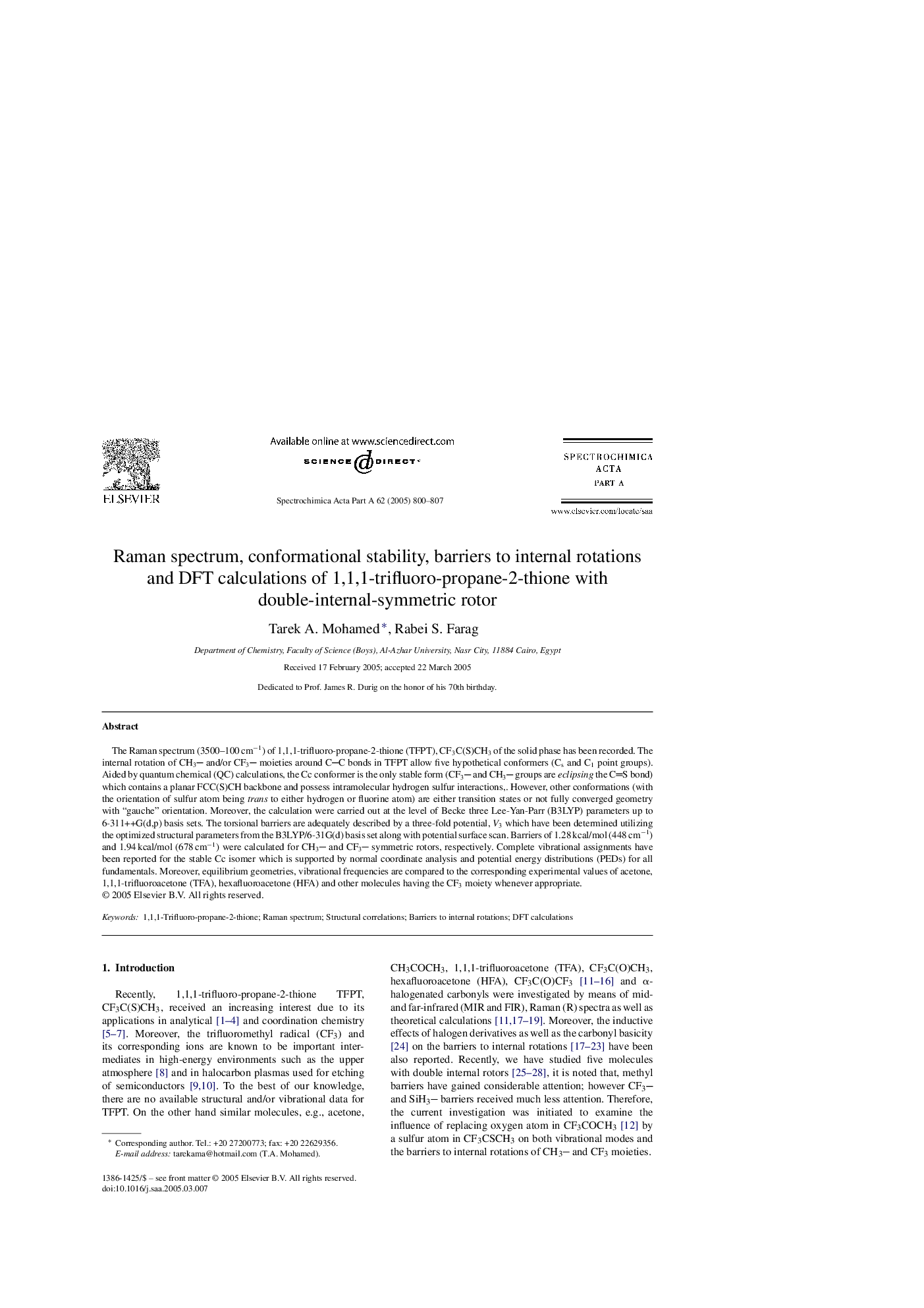| Article ID | Journal | Published Year | Pages | File Type |
|---|---|---|---|---|
| 9756916 | Spectrochimica Acta Part A: Molecular and Biomolecular Spectroscopy | 2005 | 8 Pages |
Abstract
The Raman spectrum (3500-100Â cmâ1) of 1,1,1-trifluoro-propane-2-thione (TFPT), CF3C(S)CH3 of the solid phase has been recorded. The internal rotation of CH3 and/or CF3 moieties around CC bonds in TFPT allow five hypothetical conformers (Cs and C1 point groups). Aided by quantum chemical (QC) calculations, the Cc conformer is the only stable form (CF3 and CH3 groups are eclipsing the CS bond) which contains a planar FCC(S)CH backbone and possess intramolecular hydrogen sulfur interactions,. However, other conformations (with the orientation of sulfur atom being trans to either hydrogen or fluorine atom) are either transition states or not fully converged geometry with “gauche” orientation. Moreover, the calculation were carried out at the level of Becke three Lee-Yan-Parr (B3LYP) parameters up to 6-311++G(d,p) basis sets. The torsional barriers are adequately described by a three-fold potential, V3 which have been determined utilizing the optimized structural parameters from the B3LYP/6-31G(d) basis set along with potential surface scan. Barriers of 1.28Â kcal/mol (448Â cmâ1) and 1.94Â kcal/mol (678Â cmâ1) were calculated for CH3 and CF3 symmetric rotors, respectively. Complete vibrational assignments have been reported for the stable Cc isomer which is supported by normal coordinate analysis and potential energy distributions (PEDs) for all fundamentals. Moreover, equilibrium geometries, vibrational frequencies are compared to the corresponding experimental values of acetone, 1,1,1-trifluoroacetone (TFA), hexafluoroacetone (HFA) and other molecules having the CF3 moiety whenever appropriate.
Related Topics
Physical Sciences and Engineering
Chemistry
Analytical Chemistry
Authors
Tarek A. Mohamed, Rabei S. Farag,
